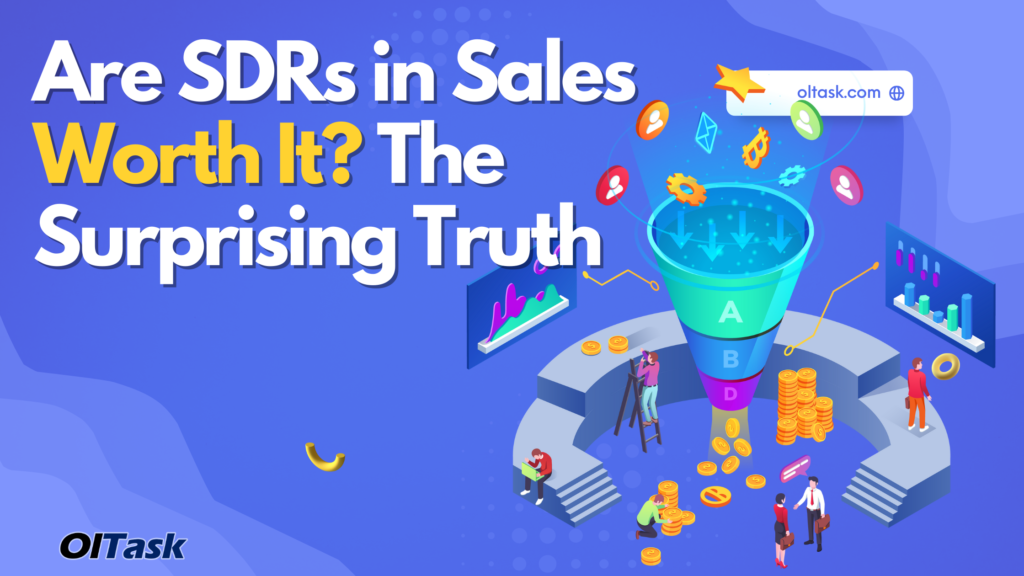In the world of sales, the role of an SDR (Sales Development Representative) is pivotal. As businesses grow and expand, the demand for skilled SDRs continues to rise. Whether you're just starting your career in sales or looking to enhance your skills, understanding the role of an SDR is essential.
SDRs are the backbone of many sales teams, responsible for generating leads and setting the stage for successful sales outcomes. By leveraging their expertise, they create opportunities that drive revenue growth for organizations. In this guide, we'll delve into the intricacies of the SDR role and explore how it contributes to a company's success.
From the skills required to thrive as an SDR to the strategies that can help you excel, this article will provide you with a comprehensive understanding of the role. Whether you're a seasoned professional or a newcomer, there's something here for everyone.
Read also:Unblocked Games 66 Ez Your Ultimate Guide To Fun And Entertainment
Table of Contents
- What is an SDR in Sales?
- The Importance of SDRs in Sales Teams
- Key Skills for SDR Success
- Daily Tasks of an SDR
- Effective Strategies for SDRs
- Key Metrics to Measure SDR Performance
- Technology Tools for SDRs
- Career Path for SDRs
- Common Challenges Faced by SDRs
- The Future of SDR in Sales
What is an SDR in Sales?
An SDR, or Sales Development Representative, plays a crucial role in the sales process. Primarily responsible for prospecting and lead generation, SDRs are the first point of contact for potential clients. Their main objective is to qualify leads and set up meetings for account executives or senior salespeople.
Role and Responsibilities
The responsibilities of an SDR include:
- Identifying potential customers through research and outreach.
- Engaging with prospects via phone calls, emails, and social media.
- Qualifying leads based on specific criteria set by the company.
- Coordinating with other departments to ensure a smooth handoff of qualified leads.
SDRs are instrumental in driving the sales pipeline, ensuring that the sales team has a steady flow of qualified leads to work with.
The Importance of SDRs in Sales Teams
SDRs are essential to the success of any sales team. By focusing on lead generation and qualification, they allow senior salespeople to concentrate on closing deals. This division of labor increases efficiency and productivity within the sales department.
Moreover, SDRs help companies scale their sales efforts by identifying and nurturing potential customers. Their ability to engage with a large number of prospects ensures that no opportunity is missed.
Key Skills for SDR Success
To excel as an SDR, certain skills are indispensable. Here are some of the most important ones:
Read also:New Wasmo Telegram Link Your Ultimate Guide To Discover And Join
Communication Skills
Effective communication is at the heart of an SDR's role. Whether it's crafting persuasive emails or delivering compelling phone pitches, the ability to communicate clearly and persuasively is crucial.
Research and Analytical Skills
SDRs must be adept at researching potential clients and analyzing data to identify qualified leads. This involves understanding industry trends and leveraging tools to gather relevant information.
Resilience and Adaptability
The sales environment can be challenging, with rejection being a common occurrence. SDRs must be resilient, bouncing back from setbacks and adapting to changing circumstances.
Daily Tasks of an SDR
A typical day in the life of an SDR involves a variety of tasks. These include:
- Reviewing lead lists and researching potential clients.
- Making outbound calls and sending follow-up emails.
- Scheduling meetings with qualified leads.
- Collaborating with the sales team to ensure a seamless transition.
Each task contributes to the overall goal of generating leads and setting up successful sales meetings.
Effective Strategies for SDRs
To maximize their effectiveness, SDRs should employ proven strategies. Here are a few:
Personalization
Tailoring outreach efforts to suit individual prospects can significantly increase response rates. By personalizing emails and calls, SDRs can create a more meaningful connection with potential clients.
Prioritization
Not all leads are created equal. SDRs should prioritize their efforts based on the likelihood of conversion, focusing on high-potential prospects first.
Follow-Up
Consistent follow-up is key to nurturing leads. SDRs should establish a follow-up schedule to ensure that no opportunity slips through the cracks.
Key Metrics to Measure SDR Performance
Evaluating the performance of SDRs requires tracking specific metrics. These include:
- Number of leads generated.
- Conversion rates from lead to meeting.
- Average time spent per prospect.
- Feedback from sales teams regarding lead quality.
By monitoring these metrics, companies can gain insights into the effectiveness of their SDRs and make data-driven decisions to improve performance.
Technology Tools for SDRs
Modern SDRs rely on a variety of technology tools to enhance their productivity. These include:
C Customer Relationship Management (CRM) Systems
CRM platforms like Salesforce and HubSpot help SDRs manage leads, track interactions, and analyze performance data.
Prospecting Tools
Tools such as LinkedIn Sales Navigator and ZoomInfo enable SDRs to identify and research potential clients more effectively.
Communication Platforms
Platforms like Outreach and Gong assist SDRs in optimizing their communication strategies, providing insights into what works and what doesn't.
Career Path for SDRs
The role of an SDR can be a stepping stone to a successful career in sales. Many SDRs progress to become account executives, sales managers, or even founders of their own companies. The skills gained as an SDR—such as communication, research, and resilience—are highly transferable and valuable in various roles.
Common Challenges Faced by SDRs
While the role of an SDR is rewarding, it comes with its own set of challenges. Some of the most common ones include:
- Handling rejection and maintaining motivation.
- Managing a high volume of tasks and leads.
- Staying updated with industry trends and technological advancements.
Overcoming these challenges requires a combination of training, support from management, and a proactive approach to continuous learning.
The Future of SDR in Sales
As technology continues to evolve, the role of an SDR is likely to change. Advances in artificial intelligence and automation are already impacting how SDRs operate, streamlining processes and enhancing productivity. However, the human element of sales—such as building relationships and understanding customer needs—remains irreplaceable.
Looking ahead, successful SDRs will be those who can adapt to new technologies while maintaining the personal touch that defines great salesmanship.
Conclusion
In conclusion, the role of an SDR in sales is vital for the success of any organization. By focusing on lead generation and qualification, SDRs contribute to the growth and scalability of sales teams. To thrive in this role, SDRs must possess a combination of skills, employ effective strategies, and leverage technology to maximize their impact.
We invite you to share your thoughts and experiences in the comments below. If you found this article helpful, please consider sharing it with others who may benefit from it. And don't forget to explore our other resources on sales and marketing to further enhance your knowledge and skills.
References:
- HubSpot Blog
- Salesforce Research
- LinkedIn Sales Insights


